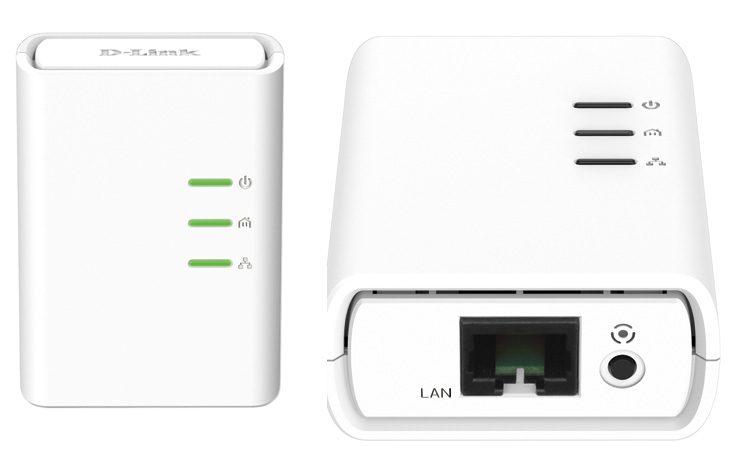D-Link’s latest Powerline adapter starter kits are the Powerline AV 500 HD Mini Starter Kit (DHP-509AV) and Powerline AV2 1000 HD Gigabit Starter Kit (DHP-601AV). See Best Powerline adapters for our recommendations. Powerline works by using your home’s power cables to transfer data and Internet signals around the house. You just plug one into a power socket near your modem/router, and then connect it using the supplied Ethernet cable. Then the second Powerline adapter goes into the room where you want the fast connection (most likely your living room or a home office); plug it into a power socket and connect your other devices in using the other Ethernet cable. It’s that simple. See What is Powerline for more details on this amazing technology. All Powerline manufacturers claim the theoretical maximum speeds of the chip within each adapter, so the 500Mbps, 600Mbps or 1,200Mbps rated speeds of adapters aren’t what you’ll actually get in your home. There are many environmental factors that limit Powerline speeds to around 100Mbps: age of your home’s wiring, other draining gadgets plugged in, and the adapters’ own limiting technologies such as the speed of the Ethernet port. For example, a Powerline adapter that uses the older 10/100 Ethernet standard will have a maximum speed of 100Mbps whether its claimed speed is 200Mbps or 1,200Mbps. Gigabit (1000) Ethernet solves at least this limiting factor. As even streaming HD TV is acceptable at 50-60Mbps this isn’t much of a problem, but for the fastest home network you should aim for at least a 600Mbps Powerline with Gigabit Ethernet – just like the D-Link Powerline AV2 1000 HD Gigabit Starter Kit (pictured above). Both the Powerline AV 500 HD Mini Starter Kit and Powerline AV2 1000 HD Gigabit Starter Kit include the required minimum two adapters plus Ethernet cables. The scores listed here are for the AV2 1000 HD, rather than the AV 500 HD. The Powerline AV2 1000 HD Gigabit Starter Kit is much the faster of the two, as its chip allows for a theoretical 600Mbps, compared to the AV 500 HD Mini’s 500Mbps – itself no slouch, although in our tests it was below average. The AV2 Powerline also employs faster Gigabit Ethernet ports, which removes the 100Mbps speed limit you get with slower 10/100 Ethernet ports. In our tough, real-world speed tests (hooking up a network between the router on the second floor of a Victorian house to the living room on the ground floor) the AV 500 HD Mini produced just-about acceptable speed scores of between 50-55Mbps, but the AV2 1000 HD scored terrifically – beating even our benchmark 1,200Mbps Powerline set up, with a score of 116Mbps. Both sets of D-Link Powerlines are basic. There’s no wireless function to add a new Wi-Fi hotspot in the second room (as some Powerlines boast) and there’s no pass-through power socket on the adapters either, so they will use up your wall sockets – don’t plug them into a power extender as this will slow them down. If you don’t have a ton of power sockets then you should consider Powerline adapters with these integrated pass-through sockets. D-Link is planning pass-through versions of both products. One advantage of no pass-through is the size of the adapters. The AV 500 HD Mini (as the name suggests) are tiny – maybe the smallest Powerline adapters we’ve seen. The AV2 1000 HD adapters are larger but still discreet. Check out all our Powerline adapter reviews and also our group test of the best Powerline adapters we’ve tested. You can get more information on Powerline including explanations of Powerline speed myths and lots of tips and trick in our feature What Is Powerline. Simon was Editor of Macworld from the dark days of 1995 to the triumphant return of Steve Jobs and the launch of the iPhone. His desk is a test bench for tech accessories, from USB-C and Thunderbolt docks to chargers, batteries, Powerline adaptors and Fitbits.

